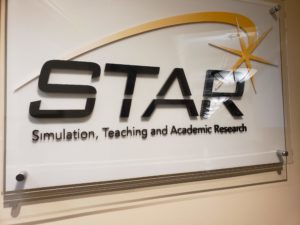Educator in the Workforce caps program year with focus on healthcare careers
Teachers, counselors and others participating in Educator in the Workforce never fail to come away from the program’s daylong immersion sessions with something to take back to their students.
At Allegheny Health Network’s Simulation, Training & Academic Research (STAR) Center in May, for example, one teacher said her biggest takeaway was that “there are so many jobs for people with just a high school diploma.” 
For others, it was learning about paid summer internships that AHN offers to help high school students explore healthcare careers; or finding that so many entry-level jobs not only offer solid career paths but also opportunities for further training and education.
Presentations at AHN encompassed both familiar healthcare career paths like nursing and pharmacy and much less visible ones like dosimetry and audiology.
The site visit at AHN’s STAR Center capped the first full year for Educator in the Workforce. The program began with a pilot in the spring of 2018. The Consortium fully launched the initiative with eight site visits during the 2018-2019 school year. It is designed to address a need educators often express–getting enough exposure to careers outside education to help them give students guidance.
Along with healthcare careers at AHN, this year’s sessions showcased employment opportunities in construction, manufacturing, broadcasting, entrepreneurship, sanitation, financial services and electric utilities. Other hosts included Mascaro Construction, Covestro, NEP Group, Alpha Lab, ALCOSAN, PNC Financial Group and Duquesne Light Co.
Along with presentations about the full range of careers an employer offers, immersion sessions typically include facility tours and in some cases, opportunities for educators to talk with employees about their jobs or even try their hands at them.
During the AHN visit, for example, participants got hands-on opportunities to do the same kinds of procedures in the simulation lab that employees do in training or for practice. Simulations range from delivering babies in a maternity unit to reviving an overdose victim in an ambulance. In the lab, clinicians work with robotic mannequins that are programmed to simulate respiration, heartbeat and other vital signs and bodily functions as they would change in response to different clinical conditions and treatment.
Offering career paths for students without college degrees wasn’t unique to AHN. All host employers this year described opportunities for advancement from the entry-level and in many cases, opportunities for further training and education. Just as at AHN, participants at other sites invariably expressed surprise at the availability of career paths for students without degrees.
“I’ve really enjoyed the visits,” said one Clairton City School District teacher who attended two this year. After learning of all the opportunities at AHN, she added, “I’ve already got students in mind who I’ll take all of this back to.”






